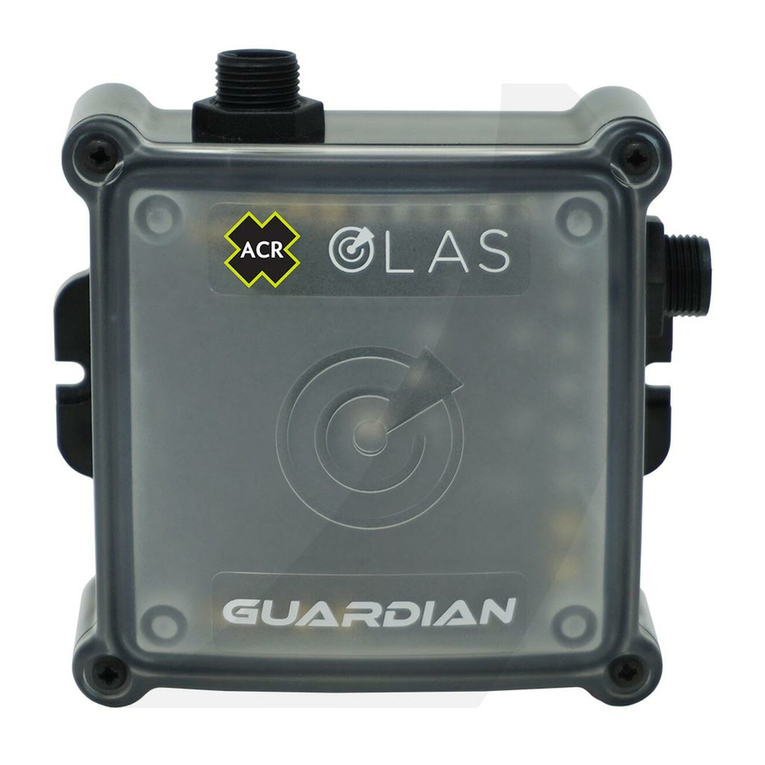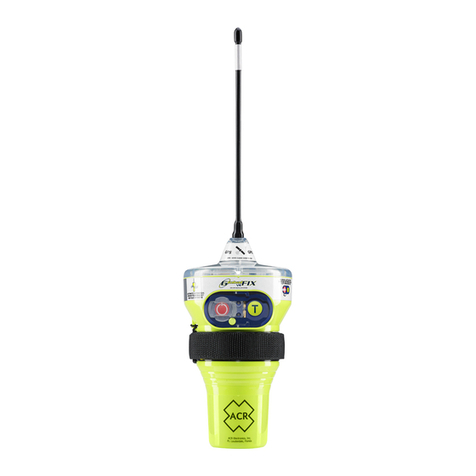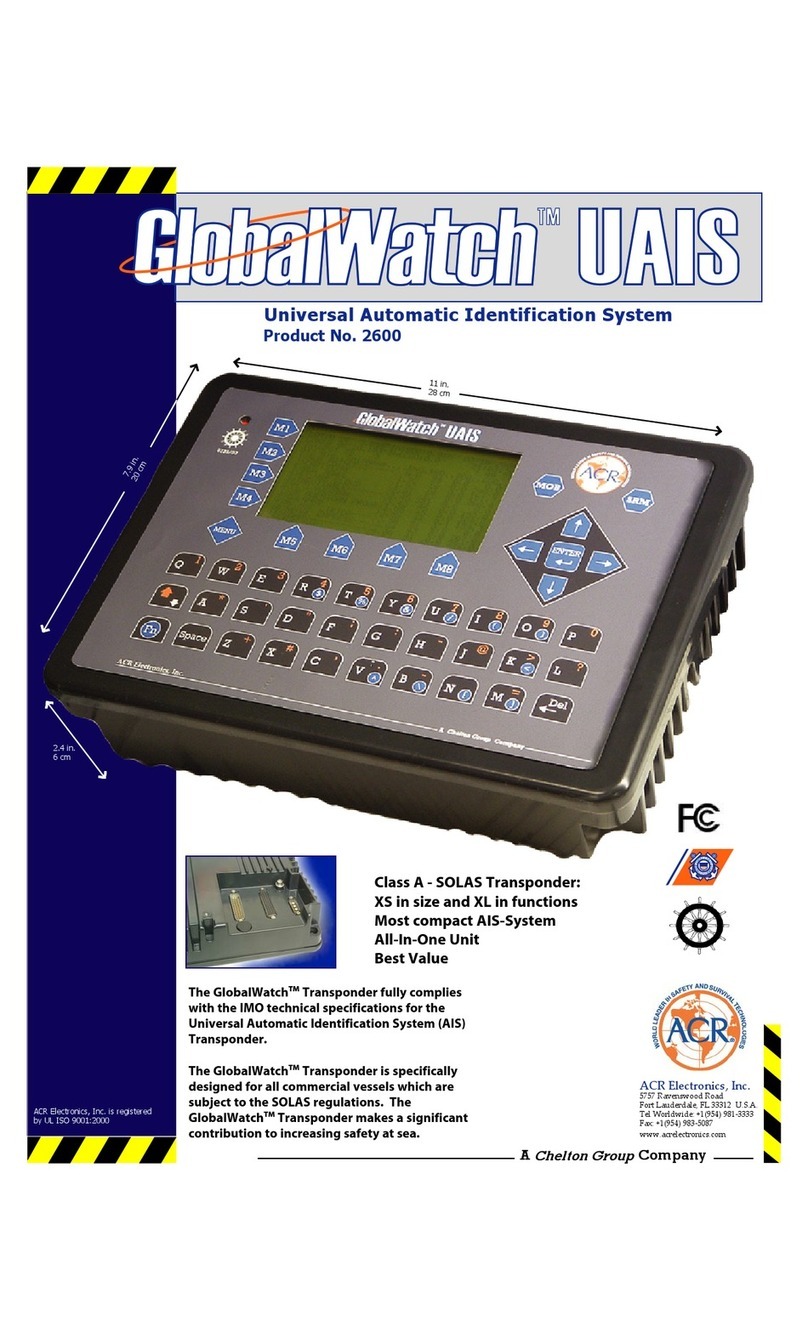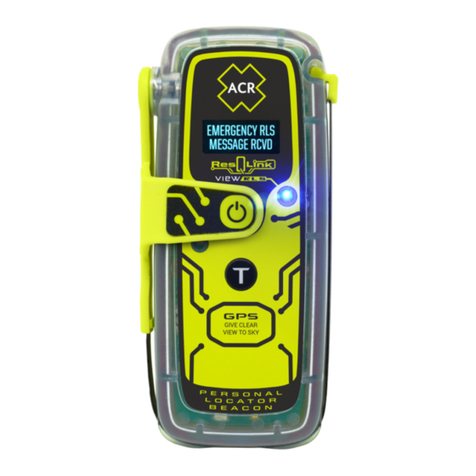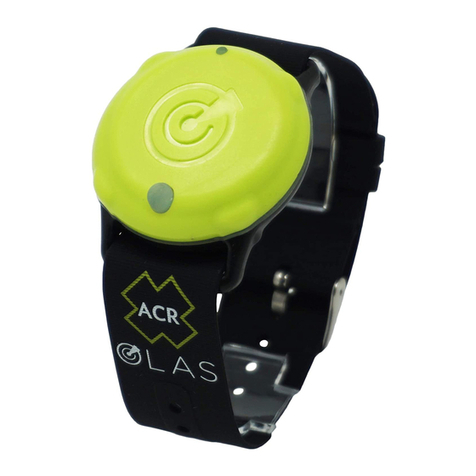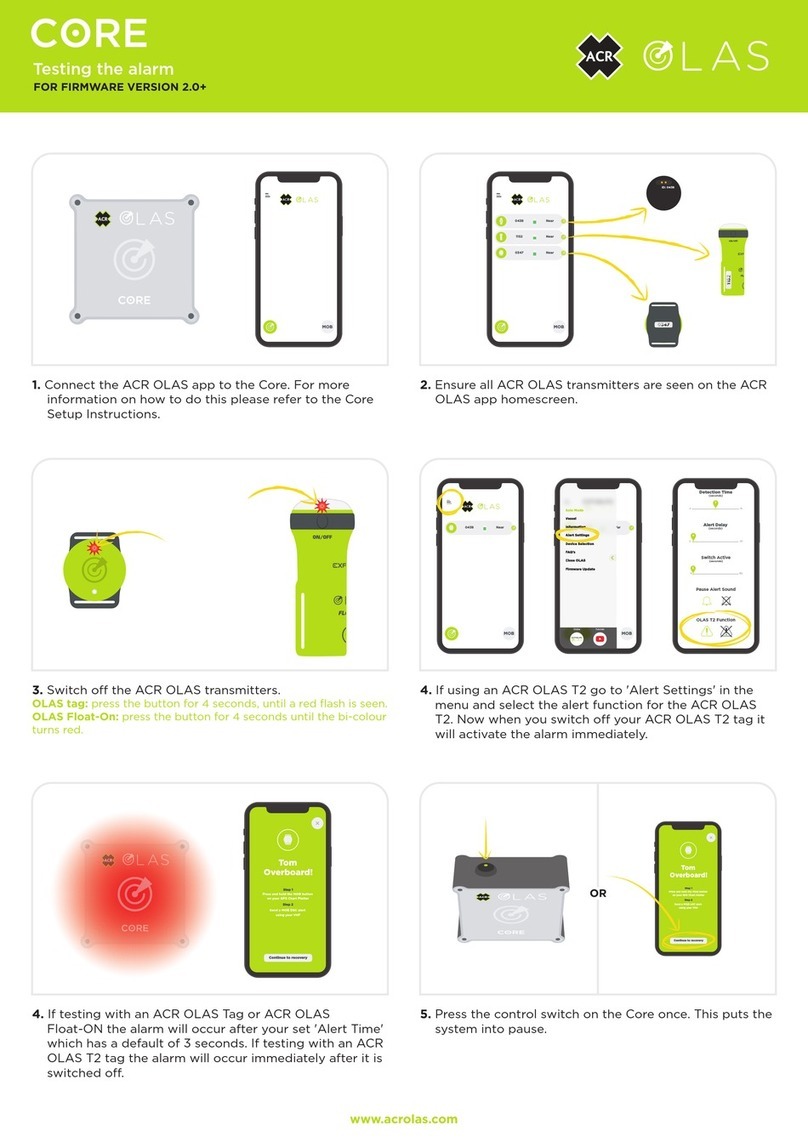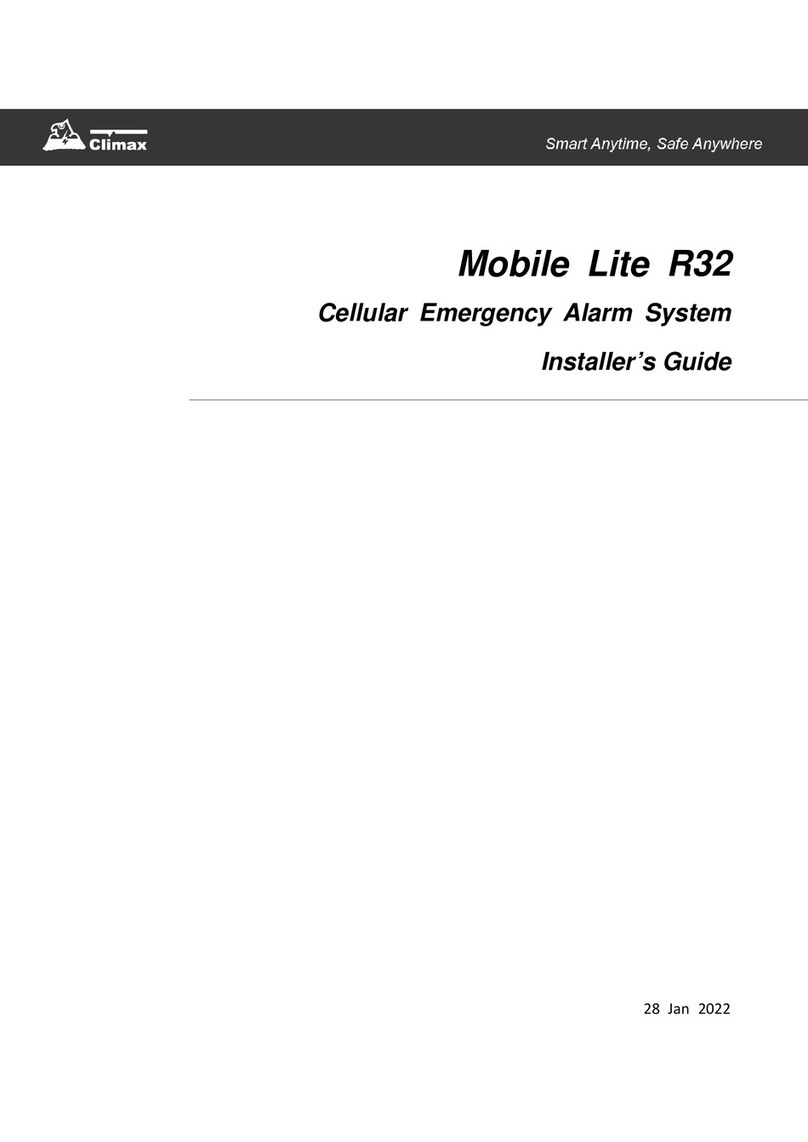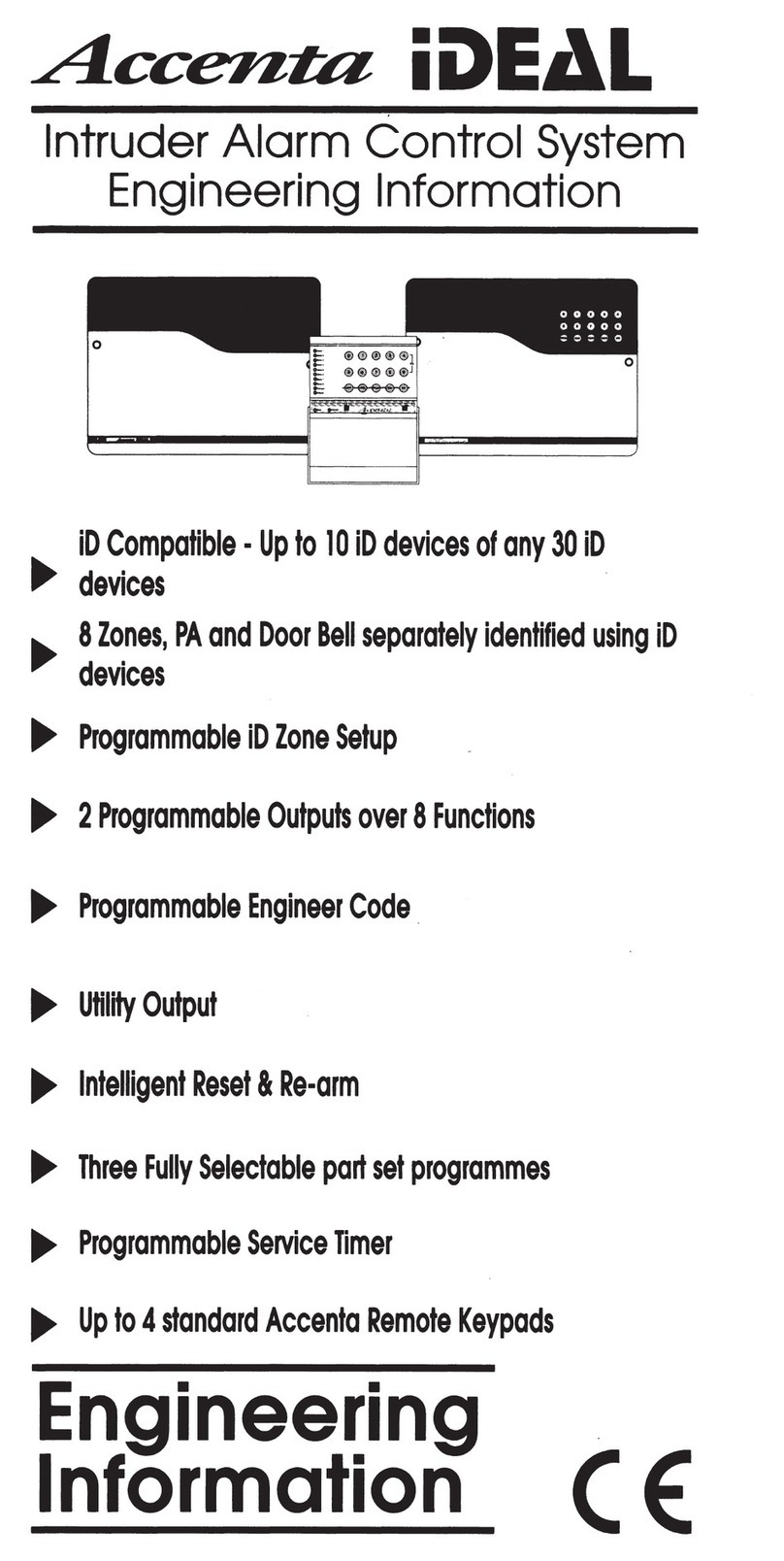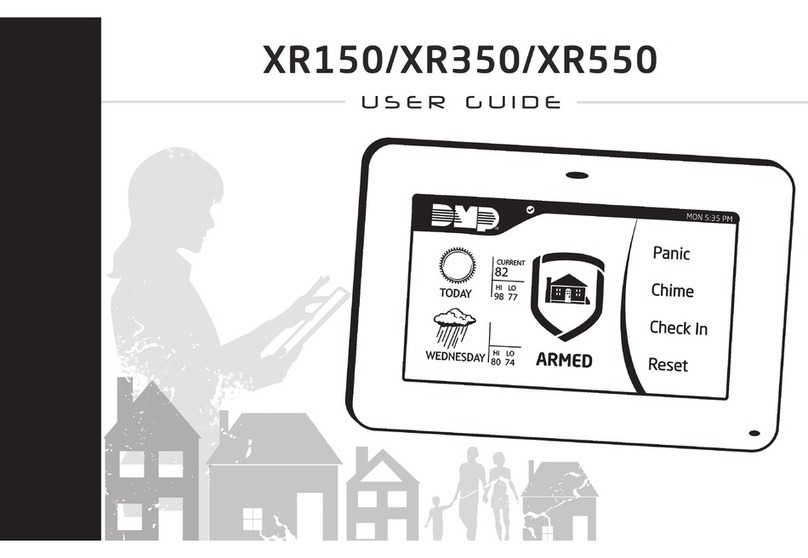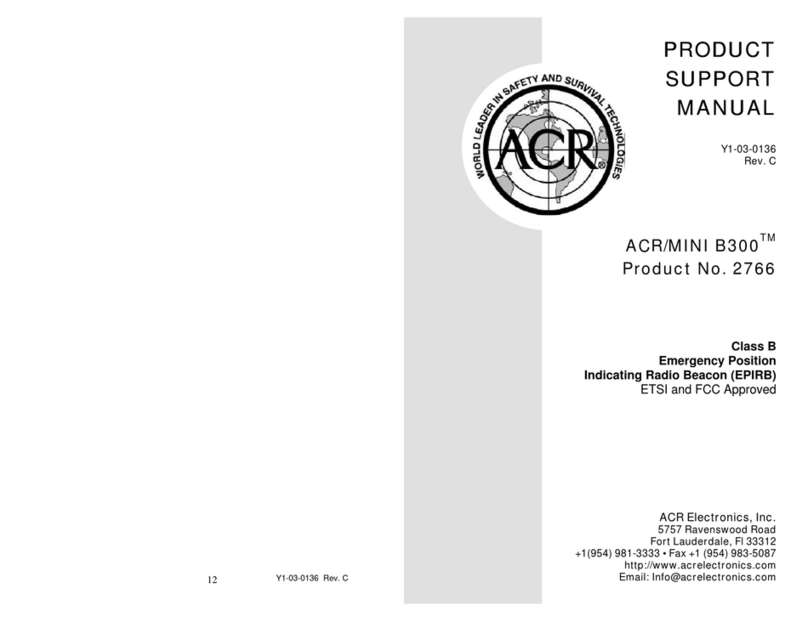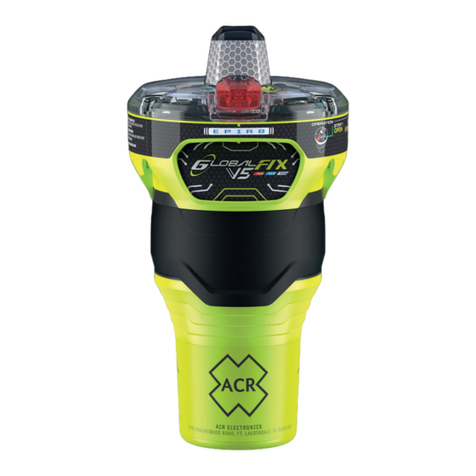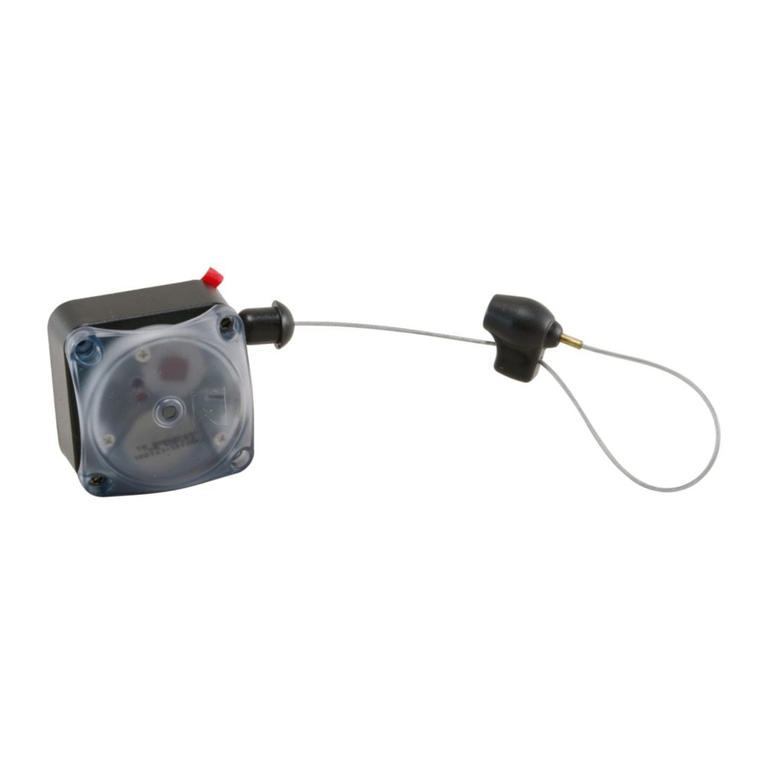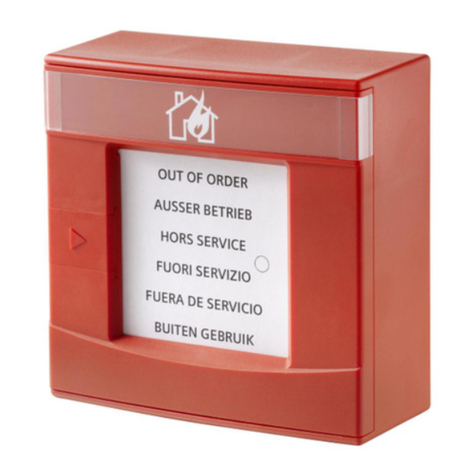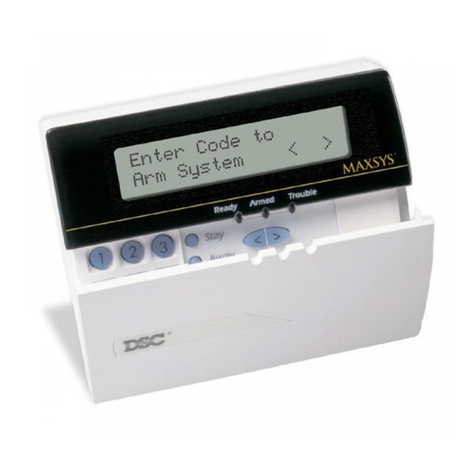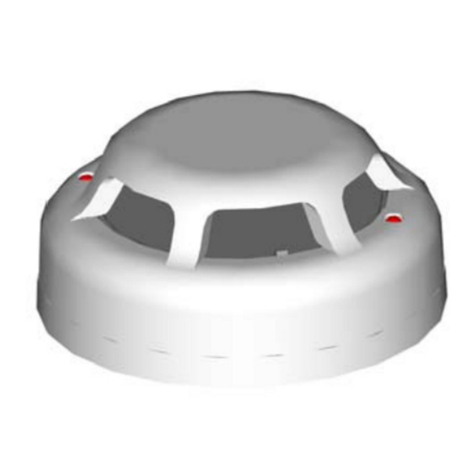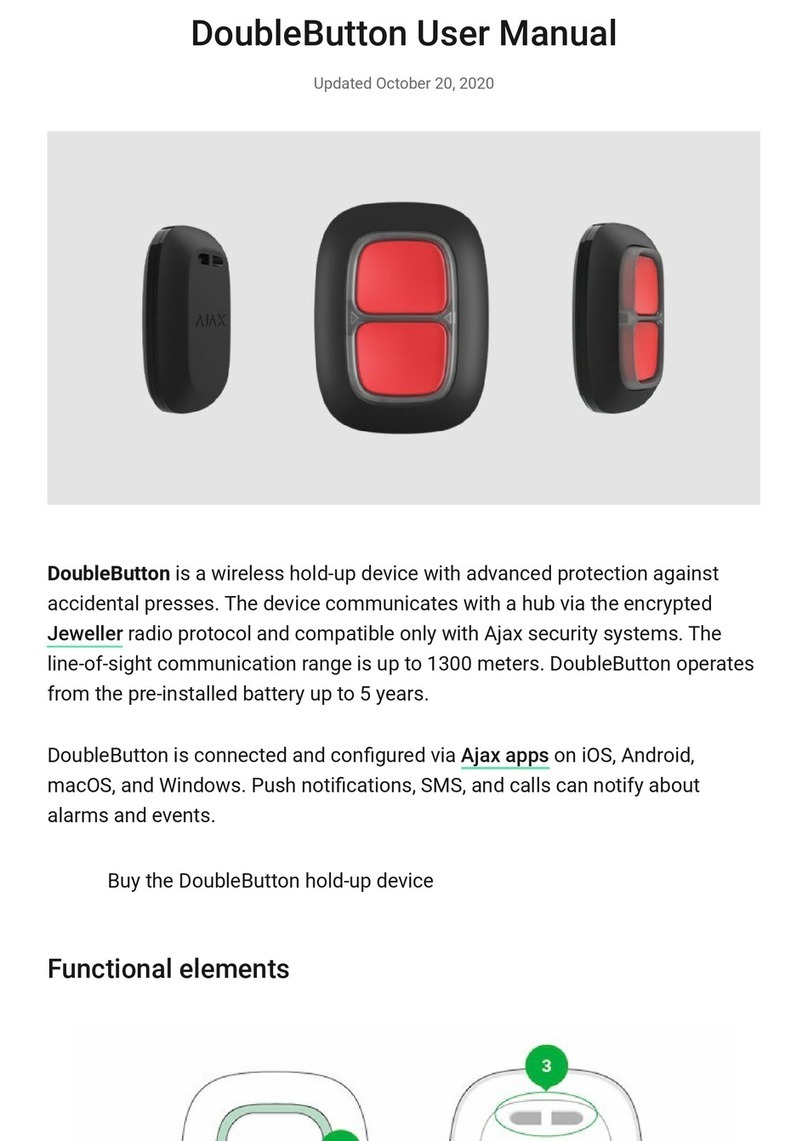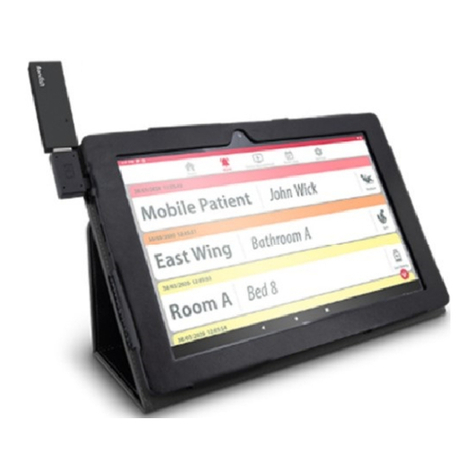
Y1-03-0180 Rev. A
4
The information provided on the Registration Form is used only for rescue purposes. The
Registration Form should be filled out and mailed immediately. Registration can be expedited by
registering online or by faxing the registration form to Fax # (301) 568-8649. Registrations should
be faxed in the event the Beacon is to be placed in immediate service and followed up with the
mailing of the hard copy form.
All registration forms will be entered in the 406 MHz Beacon Registration Database within 48
hours of receipt. A confirmation letter, a copy of the actual registration and a proof-of-registration
decal will be mailed to you within two weeks. When you receive these documents, please check
the information carefully and place in the SSAS annex of your vessel security plan. Do not affix
the registration label to the beacon. This may compromise the covert nature of the beacon. (see
page 1). If you do not receive confirmation back from NOAA, Please call toll free 1-888-212-
7283 for assistance.
1.4.1 Commercial vessels in the United States
In the United States, commercial vessels that are required to have a Radio Station License are
required to modify that license when an SSAS is added to the vessel. Please update FCC FORM
605 to modify your Radio Station License. For information on whether you need a Radio Station
License, call toll free 1-888-CALLFCC (225-5322)
1.5 Registration outside of the United States
For use on vessels flagged in countries other than the United States, the sales agent should assist
in filling out the forms and sending to that country’s National Authority at the time of purchase.
To verify that the unit is properly programmed for that country, view the UIN label on the back of
the unit. In the event that the Beacon is not programmed for the country in which the vessel is
flagged, the sales agent (if properly equipped) MUST reprogram the unit for that country.
1.6 Change of ownership or contact information
It is the owner’s responsibility to advise the National Authority of any change in the information
on the registration form. If the current owner of the Beacon is transferring the Beacon to a new
owner, the current owner is required to inform the National Authority by Letter, Fax or telephone,
of the name and address of the new owner. The new owner of the Beacon is required to provide
the National Authority with all of the information requested on the Registration form. This
obligation transfers to all subsequent owners. In the United States registration forms are available
from NOAA. Call 1 (888) 212-7283 or visit
www.beaconregistration.noaa.gov
1.7 Commercial vessels worldwide
406 MHz SSAS Beacons that are carried on commercial vessels world wide, should be registered
with the country where the vessel is flagged regardless of where the vessel operates. When a
commercial vessel acquires a 406 MHz SSAS Beacon from outside of its flagged country; the
Beacon MUST be reprogrammed and register the beacon according to its flag state and its MMSI.
